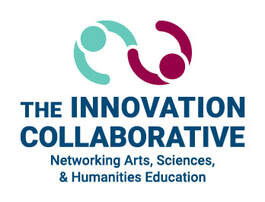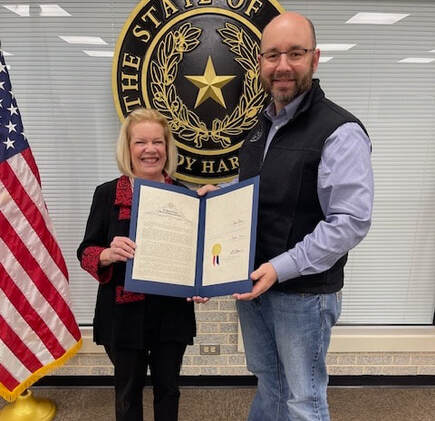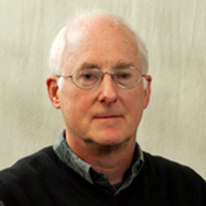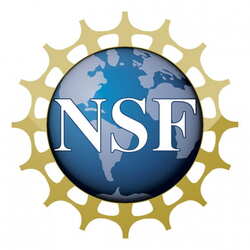 As STEAM (Science, Technology, Engineering, the Arts/Humanities, and Math) continues to grow rapidly in the Informal Science Learning (ISL) Out-of-School-Time field, there exists a wide variety of STEAM findings from both researchers and practitioners. These findings are often developed in silos – research isolated from practice and practice from research. The Collaborative, in an initial informal study of this phenomenon, found that there was broad interest from both researchers and practitioners in bridging this gap, especially relating to equity in ISL. They demonstrated significant interest in developing ways to be aware of each other’s work and potentially to collaborate. To address this, Texas Southern University (TSU), one of the largest and most comprehensive HBCU’s (Historically Black Colleges and Universities) in the U.S., graciously partnered with the Collaborative. TSU, a long-time member of the Collaborative, is represented on the Collaborative Board of Directors by Bernnell Peltier-Glaze, Ed.D., Associate Professor, and on the Advisory Council by Lillian Poats, Ed.D., Professor and Former Acting Provost & Vice President for Academic Affairs & Research. Both are members of TSU’s Department of Educational Administration and Foundations in the College of Education. Dr. Peltier-Glaze, Dr. Poats, and Collaborative Executive Director Lucinda Presley developed this successful grant proposal. Dr. Poats is now the grant’s Principal Investigator (PI); Dr. Peltier-Glaze and Lucinda Presly are the Co-PIs. They are joined on the grant’s Leadership Team by Grant Advisor Judy Koke, Deputy Director and Director of Professional Learning at Institute for Learning Innovation, and by Grant Evaluator Kathy Terry, Senior Researcher at American Institutes for Research. This grant is a two-year (2023-2025) STEAM ISL working conference project that integrates a two-day in-person conference with two years’ virtual work by all participants. It addresses: 1) the need to develop more mutually supportive links between researchers and practitioners; 2) equitable access, framing, and design in STEAM ISL; and (3) through STEAM ISL, engaging underserved populations in STEM. The project accomplishes this by developing a cohesive approach, integrating research and practice to the most salient topics regarding equity, well-being, and belonging in STEAM ISL, with particular attention to where is the field now and the critical next steps that need to be taken. The project is also creating an effective model for a STEAM ISL working conference project to address equity, well-being, and belonging. Project participants will immerse themselves throughout these two years in equity, well-being, and belonging, choose and frame the seven most important topics to address, and investigate them through virtual and in-person convenings. The chosen topics are the result of a comprehensive literature review, surveys of the researcher/practitioner primary participants, and grant Advisory Council input. The topics, each of which are represented by an investigating cohort, are:
To investigate these topics in cohorts, 23 participants—leading researchers and practitioners from across the US who were part of the project development--will attend the In-person conference July 25-26 in Houston, TX, and work virtually with their cohort throughout this two-year project. Approximately another 50 participants will work with their cohort virtually the entire two-year period. Approximately 75 polled participants will complete several surveys about the topics throughout this project. The findings will then be consolidated and communicated to very broad and diverse audiences. The anticipated outcome of this project is a more cohesive view of STEAM ISL field is in relation to equity that will benefit a broad spectrum of underserved populations.
1 Comment
The Collaborative was recognized by the 88th Texas Legislature for its 10-year anniversary. The recognition was made possible by Cody Harris, Texas State Representative from District 8, in which the Collaborative is legally based.
The resolution noted the Collaborative’s contribution to education throughout the US. This contribution, it notes, applies its research-based focus on creativity and innovation through the intersections of Science, Technology, Engineering, the Arts/Humanities, and Math (STEAM) in K-12 and lifelong learning. 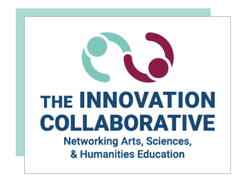 The non-profit STEAM education organization, the Innovation Collaborative, has been awarded an anonymous $120,000 grant to build its infrastructure and expand its reach and visibility to education stakeholders throughout the country. The Collaborative provides information about how effective intersections of the STEAM subject areas—Sciences, Technology, Engineering, Arts/Humanities and Math—can reinforce creative and innovative thinking in K-12 and out of-school-time. STEAM is an approach to education that promotes student-led explorations driven by curiosity and the application of competencies and practices across academic disciplines that can effectively and equitably prepare them for success in education and the 21st century workforce. Now in its eleventh year, the Innovation Collaborative previously had been awarded multiple grants, including from the National Endowment for the Arts, to help them fulfill their mission of conducting and sharing STEAM-based research on teacher professional development and classroom practice across the recognized well-rounded subject areas. According to Executive Director Lucinda Presley, the new grant will enable the Collaborative to substantially expand its efforts to promote the value and purpose of STEAM education to a broader national audience. “I truly believe this award will help us reach decision-makers, educators, and parents who are interested in STEAM education but don’t necessarily understand how it can be effectively integrated into the curriculum of their schools’ and students’ daily learning.” The Collaborative’s Strategic Advisor Jonathan Katz, former Chief Executive Officer for the National Assembly of State Arts Agencies, pointed out that the organization has done a substantial amount of important work supporting rigorous STEAM focused research and identifying exemplary practices in the field. “The challenge,” he added, “is getting the word out to teachers and their leadership that we have resources to do this sort of teaching intentionally—that is, to bring the STEAM subject areas together in terms of instruction and evaluation and improve student learning in a holistic way that is both meaningful and valuable to their overall education.” Presley said the anonymous grant funds will be strategically applied over a three-year period and used to support a part-time staff that will be working to refresh the Collaborative’s website, raise its profile through social media and its newsletter, and establish opportunities for scholars and K-12 educators to propose STEAM-based new research and lessons that can be shared by the organization. For more information about the Innovation Collaborative visit https://www.innovationcollaborative.org/ and follow us on Facebook @innovationcollaborative.org, on X at #innovationcollaborative & LinkedIn at https://www.linkedin.com/company/innov-collab/ The Importance of Failure
'Scientific American' features poem by Collaborative Strategic Advisor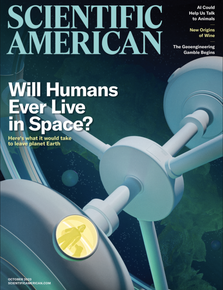 The October 2023 issue of Scientific American (Vol. 329, No. 3) features a poem by Innovation Collaborative board member and Strategic Advisor Jonathan Katz. Says Katz, “Poetry is a great medium for exploring the mysteries and ambiguities of human existence. As artificial intelligence enables large data bases, algorithms and bots to approach human senses of consciousness and individuality, a lot of fertile ground for poems emerges. AI propels both a perception of competition and a sense of solidarity between flesh-based and digital entities. Will bots enjoy poems? That remains to be seen, but a knee-jerk “no” in response to that question demonstrates the kind of hubris that gets humans in trouble. I find writing for an audience that includes digital entities a pretty interesting process and I think others who try it will find that as well.” C&R Press has published three collections of Katz’s poetry: Love Undefined, Objects in Motion, and Lottery of Intimacies. Click HERE to read the poem in Scientific American. NEUROSCIENCE: STRENGTHENING YOUR BRAIN Sandi Chapman, PhD Sandi Chapman, PhD Collaborative Research Thought Leader Sandi Chapman, PhD, and her institution, the UT Dallas Center for BrainHealth, invite you to participate in their Great Brain Gain challenge. You can access this challenge in their invitation below. Enjoy seeing how you can strengthen your brain. Our brain is one of the most modifiable parts of our body. Like our muscles, the brain can be strengthened over time. While many people know their brain can improve, they often don’t know what they can or should do to take action. Instead of focusing on decline, disease and doubt, Center for Brain Health is helping people everywhere feel empowered to improve and strengthen their brains’ fitness through daily, science-backed habits that make a difference. A simple first step to do this is to join the Center for BrainHealth’s 7-day Great Brain Gain text challenge, by texting GAIN to 888-844-8991. You’ll get daily tips to build brain-healthy habits in your everyday life. Here are 3 examples:
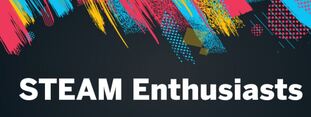 STEAM enthusiasts community The American Association for the Advancement of Science's (AAAS) discussion board for All Things STEAM (users must create a login to access the discussions) http://tinyurl.com/ykfjkmsn Progressive science education curriculum This book chapter abstract by Merrie Koester and Meta Van Sickle outlines how necessary the arts are for the fullest expression of any kind of learning, including and especially science. http://tinyurl.com/z82cesmf 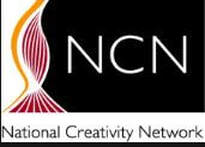 The National Creativity Network The National Creativity Network engages, connects, informs, promotes, and counsels cross-sector stakeholders who skillfully use imagination, creativity, and innovation to foster vibrant and flourishing individuals, institutions, and communities across North America. Find out more on how to get involved and check out the article links on their blog. https://nationalcreativitynetwork.org/ Connecting STEAM to agriculture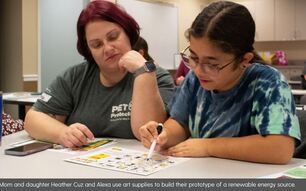 A University of Delaware program is equipping Delaware 4-H students with science, technology, engineering, arts, and math (STEAM) skills, and connecting them to agriculture. Twila Parish-Short, a 4-H youth development science educator with UD Cooperative Extension, is incorporating those five disciplines into educational programming and activities for children and teenagers around the state. She is developing a team of teenage ambassadors, as she calls them, to lead youth in STEAM education and activities. The hope, Parish-Short said, is for those ambassadors to bring the activities back to their communities, help young people explore their interest in STEAM fields, and broaden 4-H’s reach. “I’m envisioning these young STEAM ambassadors building their confidence to get into STEAM careers,” Parish-Short said. She recently hosted an event in for her first STEAM Team. Students formed groups to work on activities for this year’s 4-H STEM Challenge from the National 4-H Council. They were given projects on renewable energy that prompted them to choose an energy source to power a fictional bunker. Then, they built prototypes for those renewable energy sources using arts and crafts materials provided by Parish-Short. Read the full article HERE. Building science and engineering skills through STEAM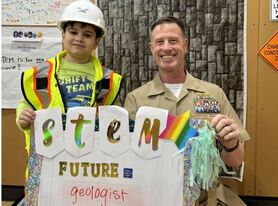 The U.S. NAVFAC Northwest facility in Bothell, Washington, launched its Science, Technology, Engineering, and Mathematics (STEM) program, with an inaugural “Once Upon a STEAM” fairytale-themed Science, Technology, Engineering, Art, and Math (STEAM) community event held at Woodside Elementary School this past November. Volunteers from NAVFAC Northwest joined a diverse array of participants, including public and private enterprises, collegiate academia, high school robotics programs, and coding companies, among others whose booths featured interactive but fast-paced STEM-related activities tailored for students in kindergarten through 5th grade. One of the most widely attended activities— the Parachute Community Build Contest—sparked creativity for participants by constructing parachutes to gain insights into the principles of gravity and aerodynamics. The event witnessed an impressive turnout, with both students and parents contributing to the creation of over 300 parachutes. Read the full article HERE. Fusing technology and creativity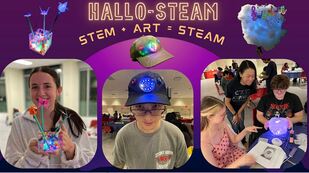 At Stony Brook (New York) University a collaboration between student and campus organizations aimed to bridge the gap between STEM (Science, Technology, Engineering and Mathematics) and the arts, making technical fields more accessible and engaging for students of all majors. They launched their effort at an event, Hallo-STEAM, which featured three unique projects, each designed to showcase the fusion of technology and creativity that can be built by anyone even if they are not “tech-savvy.” “We have planned several events for elementary and high schoolers together that meld STEM and art (STEAM), specifically exploring how origami techniques can inspire engineering design. This event was therefore a natural progression for us and paired well with our goal of showcasing the interdisciplinary nature of STEM and art to audiences with little prior experience in STEM,” said Elizabeth Argiro, a biology major who heads the school’s Interactive Origami Club. The Hallo-STEAM event incorporated traditional origami, programming, and electronics. Attendees made flower vases with glowing origami tulips, lilies, and butterflies that lit up when you clap. According to Rachel Leong, president of Stony Brook’s, Institute of Electrical and Electronics Engineers, the program was a great opportunity to introduce circuits and coding to people who might not otherwise know much about it. “The combination of art and technology excites us, and we are thrilled to see more people interested in these fields,” she said. Read the full article HERE. Beetlejuice production partners with Dallas schools to teach STEAM skills Over the course of multiple weeks, 3,400 theatre students and teachers from 26 Dallas High Schools will participate in a specially created curriculum that connects to the Broadway Dallas production of Beetlejuice, the musical adaptation of Tim Burton’s film. Taught by Broadway Dallas teaching artists, as part of the lesson plan all the participating students and teachers will attend a dedicated performance of the musical, which runs February 20-March 3, 2024. The curriculum was developed to prepare students for college and 21st-century careers and includes a sequence of lesson plans where students will learn the art and science of hand drafting, which in the theater is used for scenic design. Through hand-drafting, students will apply basic principles of scales, measurement units, and physics, developing fundamental skills can be transferred to the construction, engineering, and architecture industries. Read the full article HERE. Winnipeg STEAM project INSPIRES young children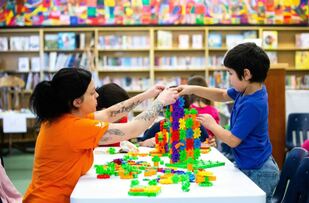 Young Designers, a Winnipeg, Canada program, employs a trio STEAM support teachers who travel from school to school to provide a six-week program to nursery-to-Grade 2 students. Each 90-minute weekly session, which typically runs from 3:30 p.m. to 5 p.m., begins with free play and ends with a group dinner. Participants spend the bulk of the time in a group read-aloud and a related STEAM design challenge inspired by the week’s storybook. One assignment involved brainstorming about a fictional species and accompanying habitat. Chicoine’s youngest child came up with a creature who is half-dinosaur, half-gorilla and lives in a forest surrounded by an abundance of grass for the fantastic vegetarian to eat. During the 90-minute sessions, children and their caregivers play with light tables, robots, gear-building kits, pipe cleaners and geometric puzzles, among other crafty and constructible items that promote creativity and fine-motor skill development. The program received $500,000 via the province’s strengthening student support and learning grant program to get the extracurricular off the ground. Participating schools receive STEAM kits, books. and professional development. In addition to being fed, every family takes home a copy of the storybook of the week. Read the full article HERE. How the maker movement is changing education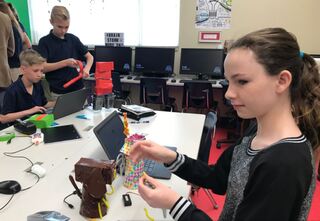 In Salt Lake City makerspaces are flourishing. Makerspaces are known as places where people, or “makers,” create, or “make,” projects using a variety of hands-on and digital tools. Commonly found at some libraries, museums, colleges and at places like the Utah STEM Action Center, the number of these spaces for open exploration have increased, especially in schools, which has given students equal access as well as gain skills in STEAM—science, technology, engineering, arts and mathematics. At the Utah Action Center, students have opportunities for hands-on making, creating, designing, and innovating that bring individuals together in a variety of mediums, including robotics, textile crafts, woodcrafts, and electronics. “Makerspaces need to be available and accessible,” said teacher Beth McKinney, who helped open the makerspace in Salt Lake’s Murray’s Hillcrest Junior High this fall. “It’s important for kids to have a place where they can explore their own interests, talents, curiosities and have that experience on their own with the freedom to do it in a safe, controlled setting. Many students might not have the tools, the confidence, or the opportunity to do so, so it’s important we have a safe space where any student can create and many learn best by doing, with their own hands.” Read the full article HERE. creating innovation challenges for students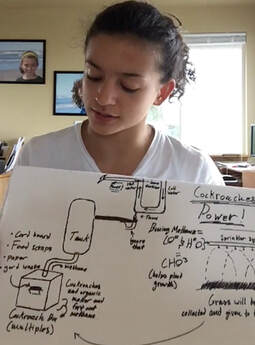 The purpose of science competitions or science fairs in STEM education is to provide students with opportunities to experience and practice science as it is practiced and experienced in the real world. A Framework for K–12 Science Education argues that the principal aim of science is to create and critique evidence-based causal accounts of natural phenomena (NRC 2012). To support this, the Next Generation Science Standards have outlined “science practices” as a guide for reproducing authentic science learning in the classroom (NGSS Lead States 2013). Further, the Frameworks suggests that science progresses through discourse within the community of scientists and emphasizes that students should learn to communicate and argue about information and findings "clearly and persuasively" (NRC 2012 p. 53). So, how can authentic science experiences be supported in classrooms? To answer that question the independent research-based non-profit TERC, has created the Innovate to Mitigate project, which hosts open innovation challenges nationally for young people ages 13–18 to develop methods for mitigating global climate change. Past submissions have included projects in a wide range of domains (e.g., energy conservation, alternative energy generation, agricultural methods, or social/behavioral change). Read the full article HERE. Providing culturally relevant STEM pedagogy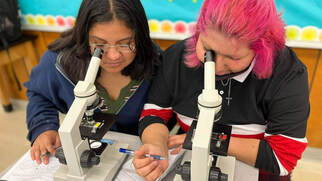 The Noyce STEM INSPIRES program, a collaboration between West Oso ISD, Texas A&M Corpus Christi, and the International Ocean Discovery Program (IODP). Texas A&M Corpus Christi, focused on providing secondary STEM teachers culturally relevant pedagogy for diverse student populations. The main goal of the NSF Noyce Scholarship program is to recruit, train, prepare, and retain highly effective elementary and secondary mathematics and science teachers (i.e., Noyce Scholar undergraduate teacher candidates) and teacher leaders in high-needs districts. Students participate in educational experiences that implement critical service-learning projects, reinforcing STEM grades 7–12 education for underrepresented groups in high-needs schools. Critical service learning is different than traditional service learning with its three-pronged approach. The community learning component provides experiences with community mentors, and university faculty with the Noyce INSPIRES team including West Oso ISD teachers. The program emphasizes the power of community and forge relationships between school district stakeholders, teacher candidates, and key community members for teacher candidates to become agents of change in their communities. In the first year of the grant, the Noyce INSPIRES team was able to partner with the International Ocean Discovery Program (IODP) and the Corpus Christi Museum of Science and History on a critical service-learning project benefiting the entire community. A local teacher who was a former director of educational activities for the IODP’s Deep Earth Academy was instrumental in bringing the NSF-funded, pop-up science exhibit In Search of Earth’s Secrets to West Oso ISD. The teacher worked aboard the IODP research vessel, JOIDES Resolution. The project intentionally requires the exhibit to travel to an accessible community site. Read the full article HERE. |
